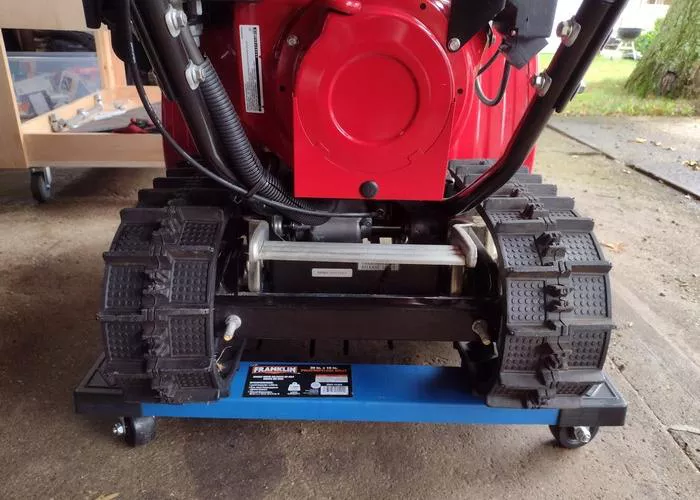Snowblowers are a common and essential tool for clearing snow from driveways, sidewalks, and large open areas during winter. However, many people wonder whether these machines are effective on ice as well. Ice can be significantly more challenging to remove than snow due to its solid and compacted nature. This article explores whether snowblowers can be used on ice, the types of snowblowers available, their limitations, and alternative methods for ice removal.
Understanding Snowblowers and Their Mechanisms
Snowblowers operate by using an auger or impeller system to break up and throw snow away from the cleared area. There are three main types of snowblowers:
Single-Stage Snowblowers
- These have a single rotating auger that scrapes snow off the ground and propels it through a chute.
- Best suited for light snowfalls and smaller areas.
- Struggles with compacted snow and ice due to the limited power of the auger.
Two-Stage Snowblowers
- Equipped with an auger that breaks up snow and an impeller that throws it out through the chute.
- Can handle heavier snowfall and some compacted snow.
- Not designed to remove solid ice but may be able to break up thin layers of ice.
Three-Stage Snowblowers
- Feature an accelerator in addition to the auger and impeller.
- More powerful than two-stage snowblowers and can handle tough, packed snow.
- While they are more effective on hardened snow, they still struggle with thick ice layers.
Effectiveness of Snowblowers on Ice
While snowblowers are designed primarily for removing snow, they can have some impact on ice depending on the thickness and type of ice formation. Here’s how different snowblower types handle ice:
Thin Ice Layers: Two-stage and three-stage snowblowers may be able to break up thin ice patches, especially if they have serrated augers.
Thick Ice Layers: Snowblowers are not designed to break through thick ice, as the auger blades are not powerful enough to chip away at solid ice effectively.
Compacted Snow and Slush: Some snowblowers, particularly high-end two-stage and three-stage models, can handle compacted snow that has started to ice over.
Glazed or Black Ice: Snowblowers are ineffective on smooth, hard ice surfaces because they cannot grip or break the ice apart.
Factors That Affect Snowblower Performance on Ice
Several factors determine how well a snowblower might handle icy conditions:
Auger Design
Serrated or steel augers may be better at breaking up ice compared to plastic or rubber augers.
Standard augers struggle with ice because they lack the necessary cutting force.
Engine Power
More powerful engines provide better performance in breaking up compacted snow but may still struggle with solid ice.
Tire Traction
Ice reduces traction, making it difficult for the snowblower to gain stability.
Using tire chains can improve grip on icy surfaces.
Surface Type
Uneven or rough surfaces may provide more opportunities for a snowblower to break up thin ice.
Flat, smooth ice sheets are harder to break apart.
Alternatives to Snowblowers for Ice Removal
Since snowblowers are not specifically designed to remove ice, other methods may be more effective. Some recommended ice removal techniques include:
Ice Melt Products
Chemical deicers such as calcium chloride or magnesium chloride can help break down ice.
Rock salt is another option but may be less effective in extremely low temperatures.
Ice Chippers or Scrapers
Manual ice chippers or scrapers are effective in breaking through thick ice layers.
A metal shovel with a sharp edge can also help break up ice.
Heated Driveways and Sidewalks
Installing heating systems beneath driveways or walkways can prevent ice formation.
Sand or Grit for Traction
Spreading sand or grit over ice improves traction and reduces slip hazards.
Hot Water or Steam
Pouring hot water on ice can help melt it, though it may refreeze in extremely cold conditions.
Preventing Ice Buildup
Instead of dealing with ice after it forms, it is often better to prevent its accumulation in the first place. Some preventative measures include:
Regular Snow Removal: Removing snow promptly prevents it from compacting into ice.
Pre-Treating Surfaces: Spreading salt or brine before a snowfall can reduce ice formation.
Using Snow Melting Mats: Electric mats can keep walkways and driveways clear of ice.
Conclusion
While snowblowers can handle compacted snow and slush, they are not designed for removing solid ice. Thin ice layers may be broken up by more powerful two-stage or three-stage snowblowers, especially if they have serrated augers, but thick ice remains a challenge. Alternative ice removal methods, such as ice melt products, chippers, and sand, are more effective. Preventative measures can also reduce the need for ice removal altogether. Understanding the limitations of snowblowers on ice helps users choose the best approach for winter maintenance.

